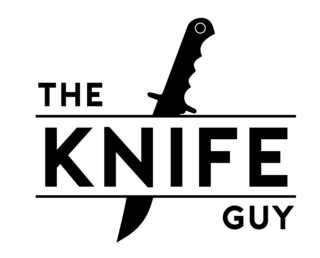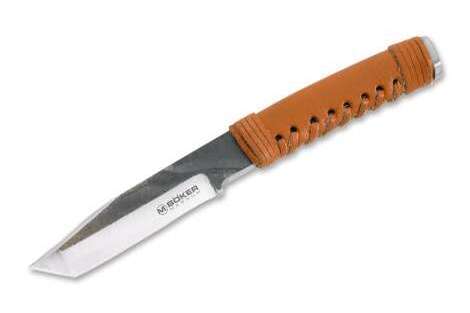- Home
- Our Products
- Folding Knives
- Victorinox Folding Knives
- Al Mar Folding Knives
- Benchmade Folding Knives
- Bestechman Folding Knives
- Black Fox Folding Knives
- Boker Magnum Folding Knives
- Boker Plus Folding Knives
- Civivi Folding Knives
- CJRB Folding Knives
- Claude Dorzome Folding Knives
- Cold Steel Folding Knives
- Fallkniven Folding Knives
- Fox Edge Folding Knives
- Gerber Folding Knives
- Higo Folding Knives
- Honey Badger Folding Knives
- Ka-Bar Folding Knives
- Kershaw Folding Knives
- Kizer Folding Knives
- Mercator Folding Knives
- Ontario Folding Knives
- Opinel Folding Knives
- Outdoor Edge Folding Knives
- QSP Folding Knives
- Sencut Folding Knives
- SOG Folding Knives
- Spyderco Folding knives
- Tac Force Folding Knives
- Vosteed Folding Knives
- Fixed Knives
- Hunting Knives
- Survival Knives
- Pens
- Fishing Knives
- Multitools
- Axes & Hatchets
- Knife Sharpeners
- Wood Carving
- Knife Rolls & Bags
- Collectors Knives
- Folding Knives
- T&C
- Contact Us
Spyderco Rockjumper Black
Information
At first glance, the Spyderco RockJumper appears to be nothing more than a lightweight Wharncliffe-bladed folder sized to split the difference between Spyderco's best-selling Delica 4 and Endura 4. If you dig a little deeper, however, you'll realize that the minor nuances of its design reflect a much deeper logic and extreme attention to detail—the kind that only comes from the mind of its designer, Spyderco founder Sal Glesser.
The basic features of the RockJumper are consistent with many of Spyderco's Japanese-made lightweight folders: a full-flat-ground VG10 stainless steel blade, a fully accessible Trademark Round Hole, a choice of PlainEdge or SpyderEdge configuration, skeletonized stainless steel liners, a sturdy lockback mechanism, an injection-molded fiberglass-reinforced-nylon (FRN) handle, a high-traction Bi-Directional Texture pattern, and a four-position pocket clip. As "standard" as all of that may sound, the real magic of this design is in the way all those proven features are expressed.
One of the primary design goals of the RockJumper was to pack as much cutting edge as possible into its pocket-friendly size, while still utilizing a mid-lockback mechanism. Extended cutting edges and minimal ricassos (the flat, unbeveled section of the blade near the juncture of the handle) are easy to achieve with a LinerLock, Compression Lock, or other mechanisms that are not located in the plane of the blade; however, with lockbacks, they are challenging. Sal solved this problem by using a "handle-forward" design philosophy that extends the lower portion of the handle toward the heel of the edge. This brilliant solution allows the cutting edge to extend nearly the full length of the blade and positions the user's hand farther forward for optimal control and leverage. Functionally, it provides the same ability to "choke up" on your grip that a forefinger choil does, but without sacrificing any usable edge length. By minimizing the dead space between the front of the handle and the heel of the edge, the RockJumper's design also greatly reduces the possibility of snagging—especially when cutting ropes or webbing in high-stress situations.
Sal insisted on a lockback mechanism for the RockJumper for a number of reasons. First, it complements the other features of the knife to make its design completely symmetrical and its operation 100% ambidextrous. Lockbacks done in the Spyderco style also feature flat "kicks" (the area on the edge side of the ricasso) that "bottom out" completely against the lock bar. This unique feature makes it impossible for the blade edge to dull from contact with the inside of the handle and has always been a defining—but underappreciated—feature of Spyderco lockbacks.
The lockback mechanism also offers impressive strength and, very importantly, a strong self-close function. Compared to other mechanisms that are not located in line with the blade, the lockback snaps the blade shut authoritatively and keeps it there, even during rigorous activities like climbing.
Like all Spyderco lockbacks, the mechanism on the RockJumper is more accurately categorized as a mid-lockback. This style of lock places the lock release in the middle of the handle for easy one-handed closing of the blade—especially when the index finger is placed at the forward portion of the handle and used as a stop. A variation of the traditional full-length lockback, the mid-lockback was pioneered by Harvey McBurnette, Dick Dorough, and W.T. Fuller, who worked together at a tire factory in Alabama in the late 1960s. After Fuller tragically lost one of his hands in an industrial accident, the three men—all machinists and aspiring knifemakers—collaborated to design a folding knife for Fuller that could be easily opened and closed with one hand. The result was what they originally called the "front lock" folder. By shortening the lock bar of a traditional lockback mechanism and adjusting its spring tension, the three men created a folding knife pattern that allowed the lock to be easily released using only one hand. Interestingly, they also created a theme for their own respective careers as custom knifemakers, as all three ultimately specialized in making fine handmade front lock folders that are now highly prized collector's items.
A few years later, in 1977, legendary knife designer Al Mar left his position at Gerber to found Al Mar Knives. A former U.S. Army Special Forces soldier with a Master's degree in industrial design, Mar was deeply inspired by the custom makers of the time—including Harvey McBurnette. He appreciated the advantages of McBurnette's front lock/mid-lockback design and decided to incorporate it into his tactically oriented line of folding knives. Ever the gentleman, Mar not only credited McBurnette for the inspiration but generously shared the secrets of the mechanism with Sal Glesser. When Mar introduced Sal to his knifemaking resources in Japan and helped plant the seeds of Spyderco's knife manufacturing, he also gave his blessing for Sal to use the mid-lockback in all his designs. Forty years later, it remains a key element of Spyderco lockback folders.
Unlike many other Spyderco lockbacks, the RockJumper does not include a Boye Dent—a scalloped recess in the lock bar that helps prevent unintentional lock release. The need for this feature is largely driven by the shape of the knife's handle and the depth of the lock release well. In the case of the RockJumper, the wide, hand-filling shape of the handle orients the lock release so it contacts the hollow of the palm no matter how the knife is gripped. This, and the carefully contoured shape of the handle spine, make the Boye Dent unnecessary.
Similarly, the rear portion of the RockJumper's blade spine is devoid of the jimping (textured grooves) often found on other Spyderco folders. Again, this was a conscious decision based on the specific ergonomics of the design, how it fits the hand, and how it rides in the pocket. Sal opted not to include it to eliminate any surfaces that might be overly abrasive to the user's hand or pockets.
Savvy knife users know that "one size fits all" is difficult to achieve in knife design. Human hands are organic and come in a wide range of shapes and sizes. Knife handles, on the contrary, are solid, inflexible objects. The RockJumper bridges the gap between these two extremes by offering a wide handle with very subtle curves that effectively "bracket" the hand for a secure grip, yet comfortably accommodate almost all hand sizes. This unique design also allows instinctive tactile orientation of the edge and provides a large surface area that eliminates hot spots and reduces fatigue during prolonged use.
For fans of lanyards and fobs, the RockJumper includes an extra-large 0.28-inch (7.1mm) lanyard hole. The mounting holes for its four-position clip are also located at the distal points of both ends of the handle for a superior balance of easy access and discreet carry.
Conceived as a handy, full-service cutting tool for outdoor and general utility use, Sal named this knife the RockJumper because he feels its features make it an ideal cutting tool for use by climbers. We understand that climbers often have strong pro and con opinions about knives, but for those who do include them in their kit, the RockJumper is hard to beat. For non-climbers, it's even harder to beat.
Specifications
- Blade Length: 3.08" (78 mm)
- Closed Length: 4.42" (112 mm)
- Overall Length: 7.49" (190 mm)
- Cutting Edge: 2.83" (72 mm)
- Blade Thickness: 0.118" (3.0 mm)
- Blade Material: VG10 Stainless Steel
- Blade Style: Wharncliffe
- Blade Grind: Full-Flat
- Blade Finish: Satin
- Blade Edge: Plain
- Handle Material: FRN
- Handle Color: Black
- Locking Mechanism: Lockback
- Pocket Clip: Stainless Steel (Tip-Up/Down, Right/Left Carry)
- Model Number: C254PBK
- Model Name: Rockjumper
- Weight: 3.1 oz. (88 g)
- Made in Japan
View your shopping basket or Browse other items in Spyderco Folding knives.
|
© Copyright The Knife Guy
- Site map
|














